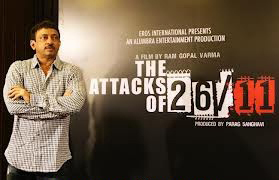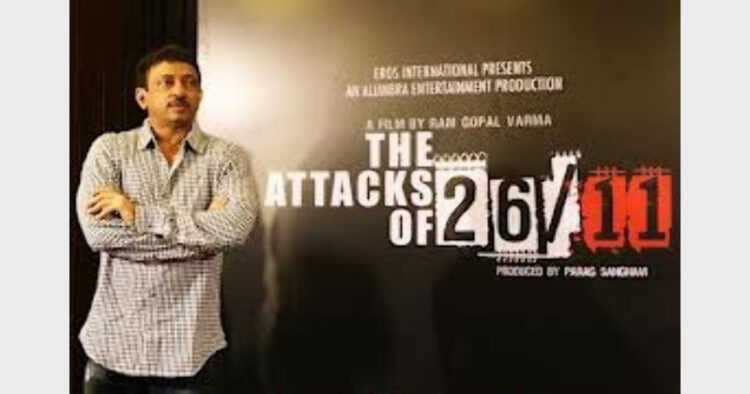 Cinema has become the most powerful form of mass media since the day it was introduced to the world. The Lumiere Brothers who invented the ‘Cinematograph’ (a compact and portable device which with a few adjustments could be used as a projector, camera or a printing machine) declared that the cinema is an invention without a future. But we have realised how powerful is the impact of cinema in modern times.
Cinema has become the most powerful form of mass media since the day it was introduced to the world. The Lumiere Brothers who invented the ‘Cinematograph’ (a compact and portable device which with a few adjustments could be used as a projector, camera or a printing machine) declared that the cinema is an invention without a future. But we have realised how powerful is the impact of cinema in modern times.
There are variable views about the effects of cinema. Producers and financiers consider it as a tempting and lucrative business. For actors and actresses, it is a means to earn money and popularity among masses. The director, story-writer, song-writer and cinematographer take it as an art work. To some, it is an audio-visual translation of literatures and has its own message. As for government, it is a potential source of revenue and employment. For majority of cinema-goers, it is nothing but a cheap and interesting form of entertainment and pastime. Whatever may be the reason, cinema has occupied a major share of market for its lovers.
Since its beginning with the film Raja Harishchandra (1913), the cinema has remained the most powerful media for mass communication in India. Cinema has the ability to combine entertainment with communication of ideas. It has the potential appeal for its audience. It certainly leaves other media far behind in making such an appeal. As in literature, cinema has produced much which touches the innermost layers of the man. It mirrors the episodes in such a manner that leaves an impact on the coming generations. Cinema presents an image of the society in which it is born and the hopes, aspirations, frustration and contradictions present in any given social order.
However, it is very unfortunate that the most popular medium of entertainment in modern times has also proved itself to be the most harmful one so far as the Indian value system is concerned. No doubt, there have been many exceptions where the films have proved artistic, entertaining and edifying at the same time, worthy of ‘delight and instruction’ of our citizens. But what we realise generally is that the film producers are mainly concerned about their profits and commercial interests and not about the ethical practices in the society. They are producing the films based on stories of sex, violence, rape, murder, betrayal and several other types of crime. And this has caused considerable damage to the young mind, which is most charmed by cinema and which is also most vulnerable and impressionable in its teenage.
There is general feeling that present day crimes are all due to effects of cinema. Besides open and demonstrative subjects throw tarnished messages. They spoil our culture, and society. Cinema and TV badly affect the health of the youngsters. They neglect studies and physical games to spend more time on this entertainment. School-going children and society children fail to make use of good impacts and are influenced by the bad part of the programmes on the air.
India produces a large number of feature films in many different languages, including several dialects. People are so overpowered and overwhelmed by its influence that even while making a political choice they are impressed by cinema. The cinema politics nexus in Tamil Nadu, for instance, is quite interesting. All five Chief Ministers who have governed Tamil Nadu since 1967 have been associated with cinema. Superstars MG Ramachandran and NT Rama Rao– doyens of Tamil and Telugu Cinema respectively – were quite active in regional and national politics.
The social impact of the cinema in India is also seen in the nationwide popularity of film-based programmes on various television channels. It is mostly the young generation that has been caught up by the film-song programmes. Popular film songs have gone very deep into the Indian collective memory and conscience. Popular films have even been changing people’s dress and hair styles; in Bombay, even shoes would be branded after a box-office hit film.
Man has instincts, different thoughts flow, which leave an effect on the minds. The person laughs with the films and tears with them. Scenes of Shaheed Bhagat Singh, a film by Raj Kumar Santoshi and Manoj Goswami makes people nationalist mind and sentimentally involved in the film show. The film dialogues are occupying places in our real life. Dialogues of Mughal-E-Azam found place in the normal interaction of people for a long time. People talked and walked like Prithvi Raj, the great king Akbar. In the same way, plays by Agha Hashat and Devdas by Sharat Chandra left a deep impact on the masses. In the same way, film Sholay created an imending effect on so many.
The dawn of Indian Cinema marked its birth and development after the first cinematographic exhibitions, which were held in Mumbai during the month of July in the year 1896, where Indian Dramatists, photographers, musicians could foresee a tremendous potential in this medium for their innovative productions. Since then there was no looking back for the Indian Cinema industry, which is growing and developing very rapidly in all aspects. The Indian Cinema industry has created new vibes and has attained a respectable position in the global film maker’s fraternity.
The Indian Cinema producers and the film fraternity have constantly been changing their trends and styles of film-making according to the ever-changing tastes and preferences of the targeted audience. The art of cinema has created a widespread and profound impact on the society. The people who call themselves mad followers and fans of a particular Cinema personality do worship their favourite actor/actress with abundant affection and interest. Cinema has almost become a religion with the increase in number of such mad followers who can be termed as ‘Cine extremists’ who would do anything for the cause of Cinema.
Certain Indian Cinemas are worthy of a watch as many as times one wishes to and also the rest fitting into the successive categories based on their merit and credentials. The various sections of the Indian society have different expectations and ideas on what is called an ideal or a perfect cinema. The film maker has to measure the pros and cons of the various such considerations and expectations from the different sections of the Indian society which is a stupendous task. However, there are a very few film makers in the Indian cine industry, who are possessed with this rare ability of taking correct notions according to the changing lifestyle and tastes and deliver the best possible results in terms of production.
—Dr Shakti Kumar Pandey













Comments